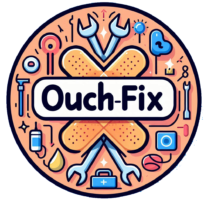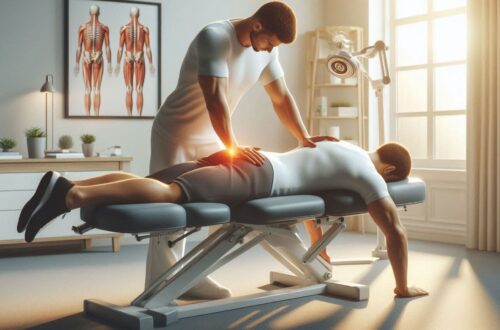Pain is a universal experience. Whether it’s a sore back from sitting too long, muscle aches after a workout, or chronic conditions like arthritis, pain can impact every part of your life. While medications are often the go-to solution, they can come with side effects, risks of dependency, and don’t always address the root cause.
The good news? You don’t have to rely solely on pills. Many safe, natural, and effective strategies can help reduce pain, improve mobility, and enhance your overall well-being. By combining lifestyle changes, mind-body techniques, and alternative therapies, you can create a personalized pain-management plan that works for you.
In this guide, we’ll explore 17 proven natural pain relief methods—backed by research, expert insights, and real-world examples.
Understanding Pain and Why It Happens
Pain can be short-term (acute) or lonPain can be acute or chronic, and knowing the difference helps you choose the right treatment approach.

- Acute pain usually comes from an injury, surgery, or sudden illness. It tends to fade as your body heals.
- Chronic pain lasts for months or years, often linked to conditions like arthritis, fibromyalgia, or nerve damage.
👉 According to the Centers for Disease Control and Prevention (CDC), nearly 20% of adults in the U.S. live with chronic pain. Recognizing whether your pain is short-term or long-lasting is the first step to managing it effectively.
Mind-Body Techniques to Ease Pain
Your mind and body are deeply connected. Learning to calm your nervous system can significantly reduce how strongly you feel pain.
🧘 Meditation and Mindfulness
Regular meditation helps retrain your brain to respond differently to pain signals. Studies from Harvard Medical School show that mindfulness meditation can lower pain intensity and improve quality of life for chronic pain sufferers.
Quick tip: Start with 10 minutes of guided meditation daily using apps like Headspace or Calm.
🌬️ Deep Breathing Exercises
Techniques like the 4-7-8 method (inhale for 4, hold for 7, exhale for 8) can:
- Relax tight muscles
- Slow down your heart rate
- Reduce stress hormones that amplify pain
Practice deep breathing whenever pain flares up or before bed for better sleep.
Move Your Body to Feel Better

Movement is one of the best ways to manage pain. Try low-impact exercises like:
✅ Stretching – Improves flexibility and relieves muscle tightness.
✅ Strength training – Builds muscle support for your joints and reduces strain.
✅ Yoga and Pilates – Improves mobility and reduces chronic pain (especially back and joint pain).
Eat Your Way to Less Pain
Diet plays a major role in inflammation, a key driver of pain.
🍽️ Good for Pain Relief:
- Turmeric – Contains curcumin, a powerful anti-inflammatory compound.
- Ginger – Relieves muscle soreness after exercise.
- Omega-3s (salmon, flaxseeds, walnuts) – Support joint health.
- Leafy greens – Packed with vitamins and antioxidants.
🚫 Foods to Avoid:
- Processed snacks
- Refined sugars
- Excess alcohol
- Deep-fried foods
💡 Tip: Try following a Mediterranean-style diet, which is naturally anti-inflammatory.

Also Read: How can Yoga Help in Maintaining Wellness and Reducing Aches?
Try These Alternative Therapies
Sometimes traditional methods aren’t enough. Alternative therapies can complement your routine.

✨ Acupuncture
An ancient Chinese practice that stimulates pressure points with fine needles to restore energy flow and reduce pain.
🦴 Chiropractic Care
Chiropractic adjustments align the spine, easing pressure on nerves and improving mobility.
💆 Massage Therapy
Deep tissue, Swedish, or trigger-point massage can relax tight muscles and boost circulation, offering relief from both acute and chronic pain.
Hot and Cold Therapy
- 🔥 Heat therapy: Use heating pads, warm baths, or hot water bottles to ease stiffness.
- ❄️ Cold therapy: Apply ice packs to numb sharp pain and reduce swelling after injuries.
Pro tip: Alternate heat and cold for sports injuries to maximize recovery.
Essential Oils for Pain Relief

- 🌿 Lavender: Eases tension headaches and improves sleep.
- 🌿 Peppermint: Relieves sore muscles.
- 🌿 Eucalyptus: Helps with joint inflammation.
Add a few drops to a diffuser, massage oil, or warm bath.

Also Read: How does Sleep Affect Recovery from Physical Injuries?
Manage Stress to Reduce Pain
Stress amplifies pain signals. Practices like yoga, tai chi, journaling, or cognitive behavioral therapy (CBT) can lower stress and help you regain control.
Mind Over Matter: The Power of Positive Thinking
Your mindset can directly affect pain perception. Practicing gratitude, visualization, or focusing on meaningful activities helps shift attention away from discomfort.
Get Better Sleep for Less Pain

Poor sleep worsens pain. Build a bedtime routine that promotes rest:
- Keep a regular schedule
- Avoid screens before bed
- Invest in a supportive mattress and pillow
Posture Matters
Slouching puts extra strain on your muscles and joints. Whether you’re working, standing, or sleeping, proper alignment helps prevent unnecessary pain.
📌 Quick fix: Use ergonomic chairs and set your computer screen at eye level.
Hydrotherapy: Pain Relief in Water
Water therapy reduces pressure on joints, improves circulation, and relaxes muscles. Options include:
- Swimming
- Warm baths
- Aquatic exercise classes
Music Can Soothe Pain
Music therapy isn’t just relaxing—it changes how the brain processes pain. Studies show calming music reduces stress hormones and lowers perceived pain intensity.
Herbal Remedies That Help

- 🌱 Turmeric – Anti-inflammatory powerhouse.
- 🌱 CBD oil – Helps with joint and nerve pain without psychoactive effects.
- 🌱 Willow bark – Works similarly to aspirin for pain relief.

Also Read: What Common Misconceptions About Pain Management do Experts Highlight?
Myths About Natural Pain Relief
🚫 “Natural remedies don’t work.” – Many remedies are supported by scientific evidence.
🚫 “Pain always means damage.” – Chronic pain can persist even after healing.
🚫 “Rest is best for pain.” – Gentle movement is usually more effective than complete rest.
When to See a Doctor
Natural methods are powerful, but don’t ignore serious symptoms. Seek medical care if:
- You notice swelling, redness, fever, or sudden unexplained pain
- Pain lasts longer than a few weeks
- It limits your daily activities
Final Thoughts
Managing pain without medication is possible—and often more sustainable. By blending mind-body practices, lifestyle changes, and alternative therapies, you can reduce reliance on drugs and take control of your health naturally.
Remember, every person’s pain journey is unique. Experiment with different techniques, listen to your body, and consult with healthcare professionals when needed.
👉 Start small—add one or two natural remedies this week, and build from there.
FAQs About Natural Pain Relief
Q1. What is the fastest natural way to relieve pain?
Applying ice or heat, practicing deep breathing, or using essential oils like peppermint can provide quick relief.
Q2. Can diet really reduce chronic pain?
Yes. Anti-inflammatory foods like fish, ginger, and leafy greens can help reduce pain over time.
Q3. Is exercise safe if I have chronic pain?
Gentle, low-impact activities like yoga, stretching, or swimming are generally safe and beneficial—but always consult your doctor first.
Q4. Do natural remedies replace medication?
Not always. They can complement or reduce the need for medication but should not replace prescribed treatments without medical advice.
Q5. Which herbal remedies are most effective for pain?
Turmeric, CBD oil, and willow bark are some of the most studied and widely used herbal options.





